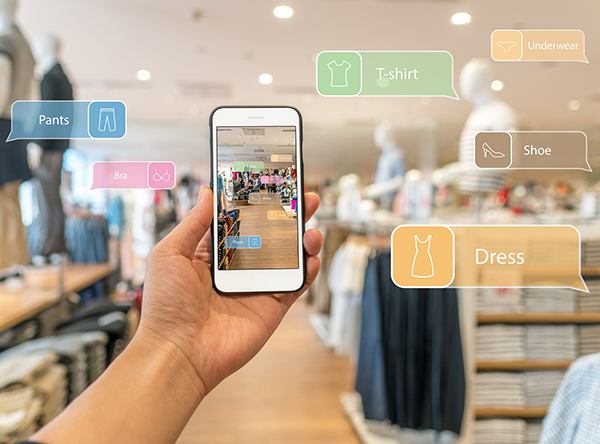When we think of virtual reality (VR), most of us look at it as a substitute for when you can’t physically be somewhere or experience something. So why would retail stores use VR, when their customers are there in person?
The fact is, especially for retailers selling bit-ticket items, customers do their research online before setting foot in an offline store. According to a Forbes article, most customers — 82 percent — conduct research online. Customers want an omnichannel shopping experience, so it behooves retailers to give them what they want. VR also gives retailers the opportunity to create highly personalized experiences for customers.
First, we must change our terminology. It’s no longer just brick-and-mortar stores and ecommerce. VR has spawned a new concept, V-commerce, and it’s poised to take the retail world by storm. Stastista estimates there will be 171 million active VR users by 2018.
VR’s popularity should come as no surprise. VR offers a fun experience similar to that of video games and puzzle games such as Candy Crush. Millennials in particular are attracted to “mixed-reality” technology.
And then there’s augmented reality (AR), which provides a live direct or indirect view of a physical, real-world environment that’s augmented by computer-generated sensory input such as video, graphics, sound or GPS data. AR enables retailers to heighten the level of interaction between consumers and their products and consumers via a completely new environment. In 2010, Converse launched an AR app that allowed customers to “try on” a shoe: When customers pointed the camera at their feet, the app overlaid an image of the shoes on their feet.
AR can’t compete with the fully immersive experience VR offers. VR is a natural in today’s mobile-centric world. Customers are constantly on their mobile phones, and VR is simply another way to connect with customers wherever, whenever.
Virtual reality can tell the back story of a product. In fashion, for instance, VR can show the creative process, from concept to finish. It’s easy to insert the customer into the experience. Imagine having the customer be “fitted” with the garment, tucks here and pins there, for a perfect fit. The customer becomes immersed in the story and, therefore, more invested and likely to make a purchase.
If you’re selling high fashion, have the person on the red carpet, blinding by the flashing cameras of the paparazzi. Or on the fashion runway, stunning onlookers with detached expressions, sultry struts and to-die-for styles.
While the term “virtual reality” surfaced in the 1980s, it’s only in recent years that the concept has become widely accepted. It has evolved from science fiction to retail reality. UK clothing retailer Topshop did not wait to jump on the VR bandwagon. In 2014, it created a virtual dressing room, allowing consumers to try on garments virtually. It also marked the first time consumers could see multiple perspectives of the clothes, both from the front and back.
Of course, implementing VR comes with a cost. In the retail space, some predict the VR investment could approach $30 billion by 2020. The actual VR hardware is relatively inexpensive, which is why many retailers like North Face are taking baby steps, implementing VR in-store only. North Face has equipped select stores with VR headsets. Realizing ROI for a full-fledged VR rollout, however, could be two to three years down the road.
In retail, it’s all about relationships. VR can strengthen and expand upon the retailer-customer relationship. VR is the new PR, helping to boost brand awareness among both existing customers and prospects.




